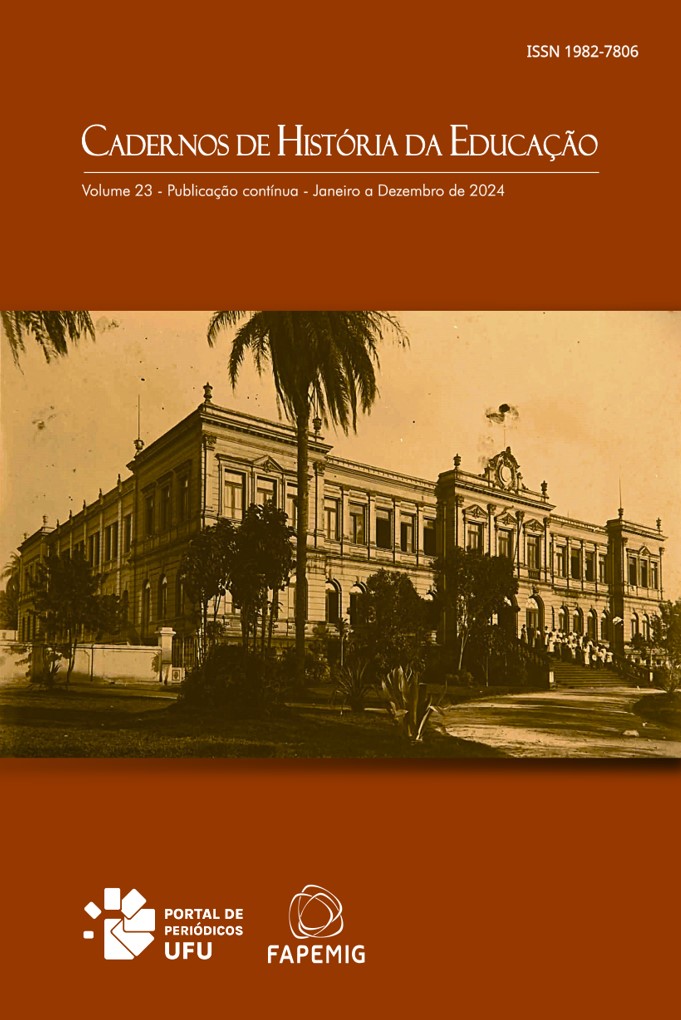The reception of psychoanalysis in Piaget’s early work
Main Article Content
Abstract
Early in his career, Piaget had a great interest in psychoanalysis. He studied psychoanalysis, was analyzed, performed analyses, attended psychoanalytic conferences, and was a member of the “Swiss Psychoanalytic Society.” In 1919, he delivered a lecture in Paris on the pedagogical trends in psychoanalysis. In this lecture, Piaget discussed fundamental assumptions of Freud’s theories, criticized some of them, and stressed the importance of psychoanalysis for the psychology of intelligence and pedagogy. Even though many publications discuss the relationship between Piaget and psychoanalytic theory, his views on psychoanalysis in the early period of his career have not yet been systematically approached in Piagetian scholarship. The objective of this article is to present and discuss the main topics of the 1919 conference in order to rescue this little-remembered episode in the history of psychology and of education and to contribute to the understanding of how Piaget’s reception of psychoanalysis took place.
Downloads
Article Details

This work is licensed under a Creative Commons Attribution-NonCommercial-NoDerivatives 4.0 International License.
Os trabalhos publicados são de propriedade dos seus autores, que poderão dispor deles para posteriores publicações, sempre fazendo constar a edição original (título original, Cadernos de História da Educação, volume, nº, páginas).
References
BLEULER, E. (1950). Dementia Praecox or the group of Schizophrenias. New York: International Universities Press. (Trabalho original publicado em 1911).
BRINGUIER, J.C. (1977). Conversations libres avec Jean Piaget. Editions Robert Laffont.
CAROPRESO, F. (2010). Freud e a natureza do psíquico. São Paulo: Anna Blume.
CIFALI, M. (1983). Théodore Flournoy, la découverte de l’inconscient. Le Bloc-notes de La psychanalyse, 3, 111-131.
CIFALI, M. (1984). La femeaux couteaux de Lichtenberg. Le Bloc-notes de La psychanalyse, 4, 171-188.
DAMÁSIO, A.R. (2000). O mistério da consciência: do corpo e das emoções ao conhecimento de si. Companhia das Letras.
DELAHANTY, G. (2000). Piaget y la atmósfera psicoanalítica de Ginebra. Subjetividad y cultura, 15, 102-107.
FREUD, S. (1915). Lo inconciente. In Sigmund Freud Obras Completas, v. 14, p. 153-214. Buenos Aires: Amorrortu Editores. (Trabalho original publicado em 1914)
FREUD, S. (1986). Letter of Sigmund Freud to Raymond de Saussure, 3 July 1922. Le Bloc notes de la psychanalyse, 6, 191-2.
FREUD, S. (1998). Introducción del narcisismo. In Sigmund Freud Obras Completas, v. 14, p.65-98. Buenos Aires: Amorrortu Editores. (Trabalho original publicado em 1914)
FREUD, S. (1998). La interpretación de los sueños. In Sigmund Freud Obras Completas, v. 5. Buenos Aires: Amorrortu Editores. (Trabalho original publicado em 1900)
HARRIS, P. (1997). Piaget in Paris: From “Autism” to Logic. Human Development, 40(2), 109-123. DOI: https://doi.org/10.1159/000278711
HAYNAL, A.; FALZEDER, E. (2014). Les Suisses. La psychanalyse en Suisse: une histoire agitée, Le Coq-Héron, 218, pp. 11-19. DOI: https://doi.org/10.3917/cohe.218.0011
KERNBERG, O. (2011). The concept of death drive: a clinical perspective. In S. Akhatar & M.K. O´Neil (orgs.). On Freud´s Beyond the pleasure principle (pp. 173-190). Karnac.
PANKSEPP, J. (1998). Affective Neuroscience. Oxford University Press.
PFISTER, O. (1920). Review of Jean Piaget's article 'La psychanalyse dans ces rapports avec la psychologie de l'enfant'. Imago, 6, 294-295.
PIAGET, J. (1918). Recherche. Lausanne: Imprimerie la Concorde.
PIAGET, J. (1920a). La psychanalyse dans ses rapports avec la psychologie de l´enfant. Bulletin mensuel de La Société Alfred Binet, 20(131), 18-34.
PIAGET, J. (1920b). La psychanalyse dans ses rapports avec la psychologie de l´enfant (II). Bulletin mensuel de La Société Alfred Binet, 20(132-133), 41-58.
PIAGET, J. (1923). La pensée symbolique et la pensée de l’enfant. Archives de psychologie 18(72), 273–303.
PIAGET, J. (1954). Les relations entre l’affectivité et l’intelligence dans le dévéloppement de l’enfant. Bulletin de Psychologie, 7, 69-71; 143-150; 522-523. DOI: https://doi.org/10.3406/bupsy.1954.6296
PIAGET, J. (1976). Autobiographie. Revue européenne des sciences sociales, 14, 1-43.
SANTIAGO-DELEFOSSE, M.; DELEFOSSE, J.M. (2002). Spielrein, Piaget and Vygotsky. Three positions on child thought and language. Theory & Psychology, 12(6) 723-747. DOI: https://doi.org/10.1177/0959354302126001
SCHEPELER, E.M. (1993). Jean Piaget’s experiences on the couch: some clues to a mystery. International Journal of Psycho-Analysis, 74, 255-273.
SIMANKE, R. T. & CAROPRESO, F. (2018). Considerações preliminares acerca de um método histórico-conceitual para a pesquisa teórica em psicanálise. In L. Fulgêncio, J. Birman, D. Kupermann & E. L. Cunha (Eds.), Modalidades de pesquisa em psicanálise: métodos e objetivos (pp. 55-68). Editora Zagodoni.
SOUZA, M.T.C.C. (2011). As relações entre afetividade e inteligência do desenvolvimento psicológico. Psicologia: Teoria e Pesquisa. 27(2), 249-254. DOI: https://doi.org/10.1590/S0102-37722011000200005
VIDAL, F. (1986). Piaget et la psychanalyse: premieres rencontre. Le bloc-notes de la psychanalyse, 6, 171-189.
VIDAL, F. (1994). Piaget Before Piaget. England: Harvard University Press.
VIDAL, F. (2001). Sabina Spielrein, Jean Piaget–going their own ways. Journal of Analytical Psychology, 46(1), 139-153. DOI: https://doi.org/10.1111/1465-5922.00220
